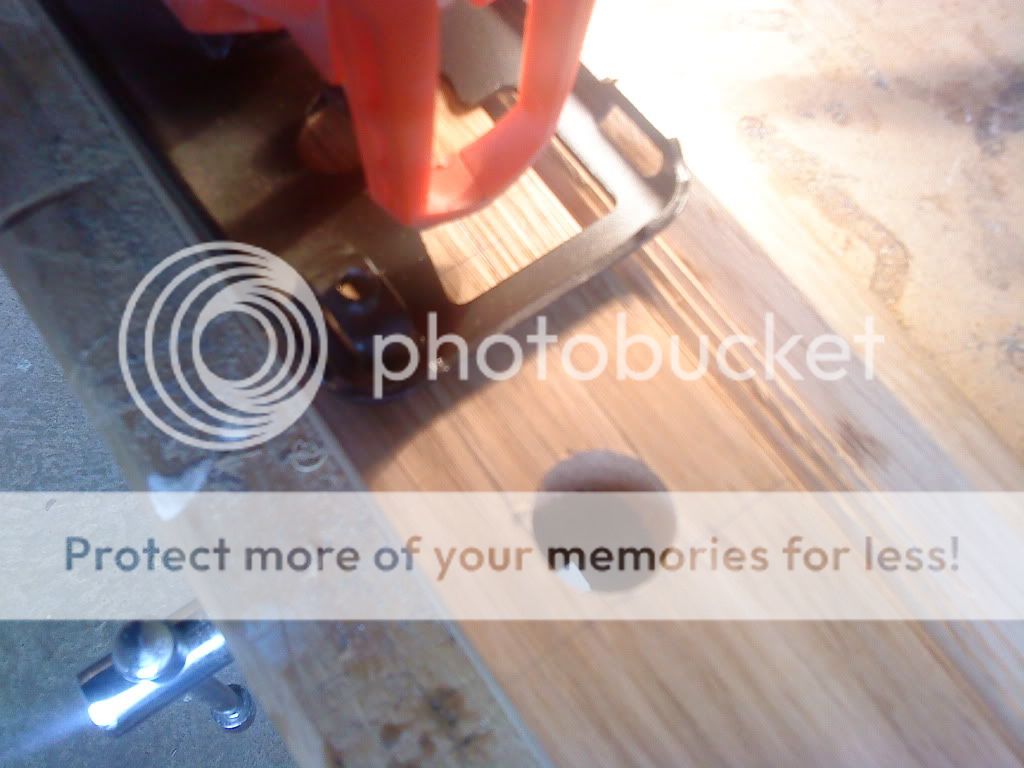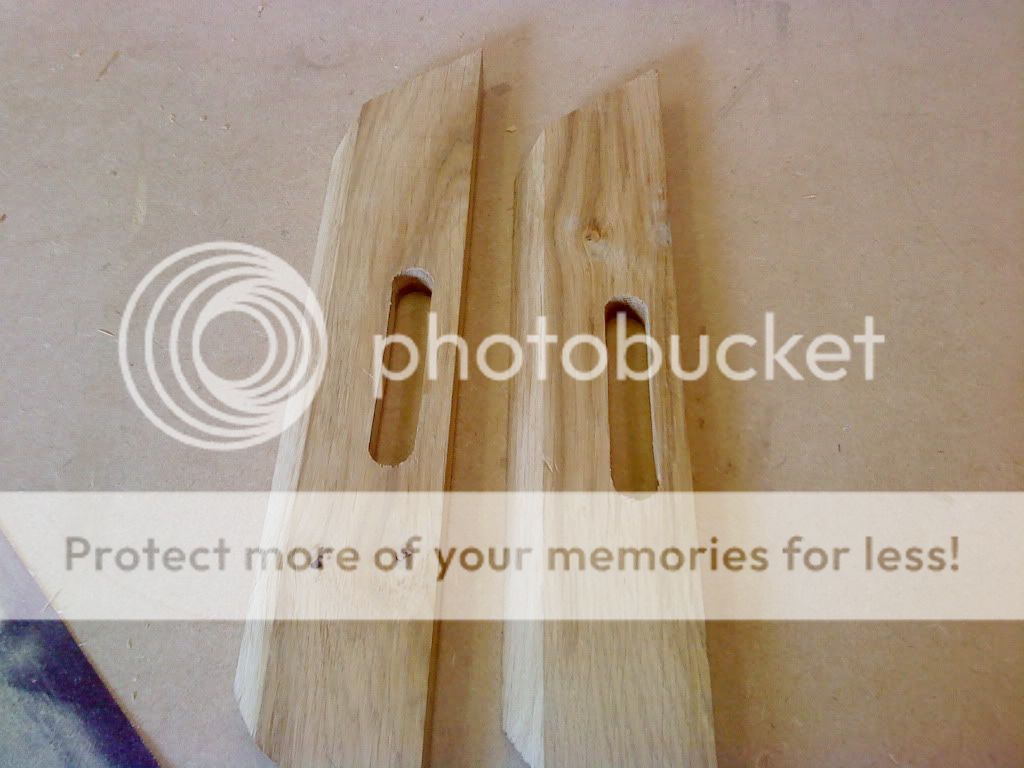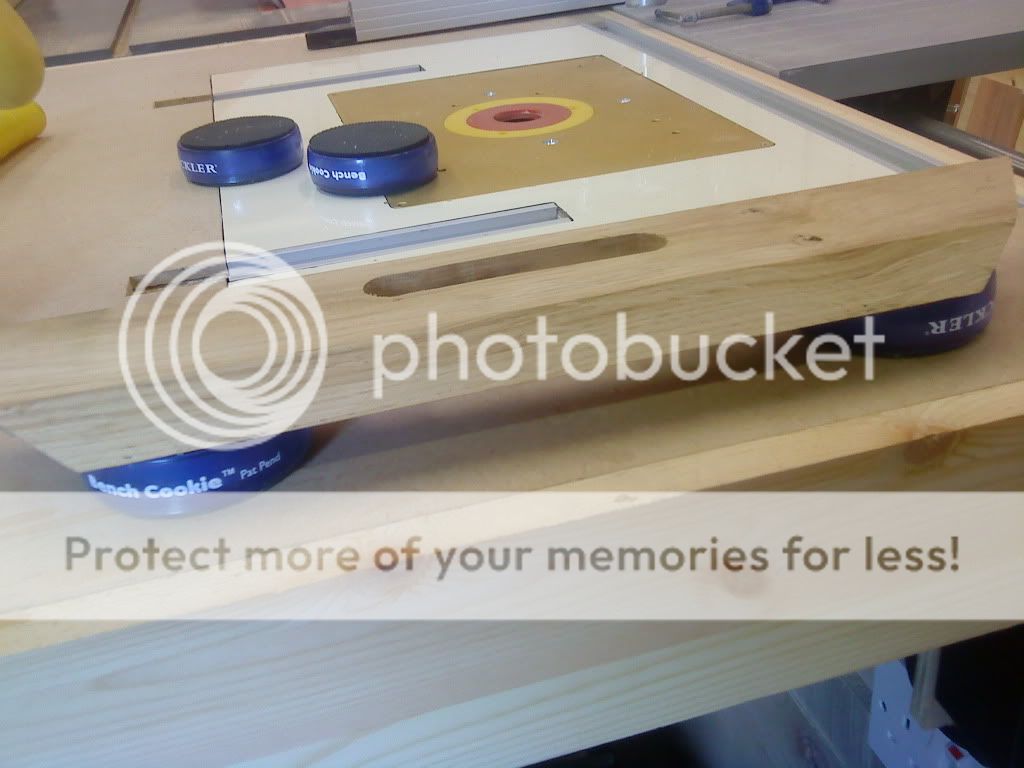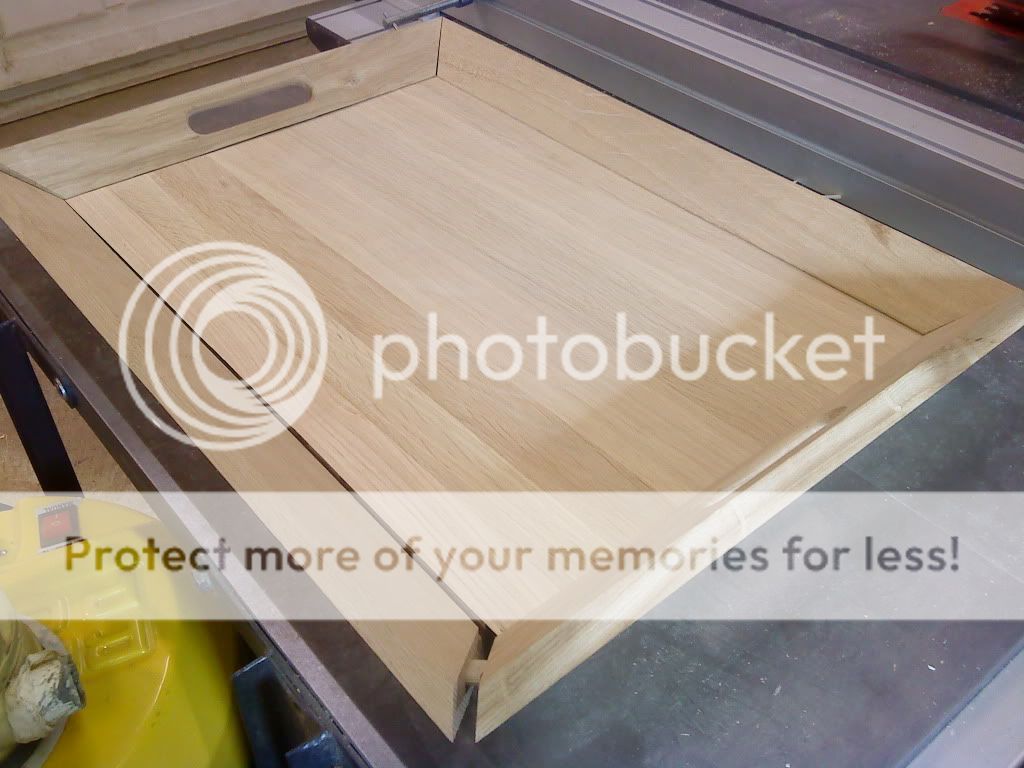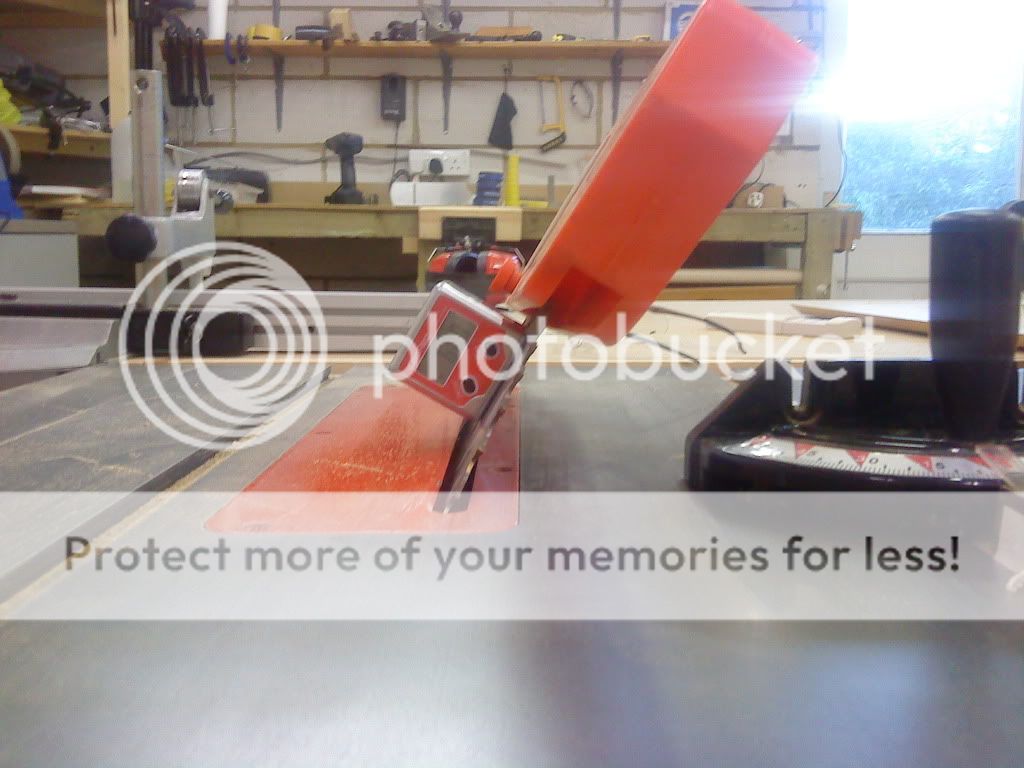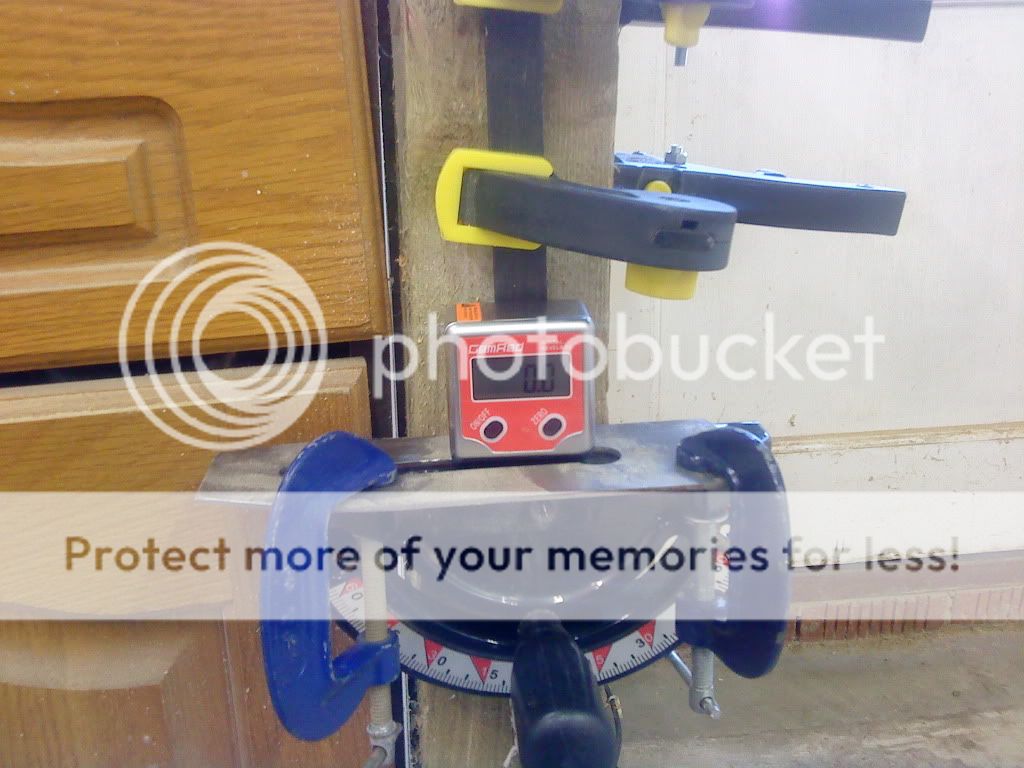OPJ
Established Member
Chems":phe98e6s said:I just had a go with the Bevel box doing the Mitres Olly, same as last time I tried didn't work. I will make a 45degree slope fence for the table and then rotate the table to 45degrees, thats what I did last time and it worked better than working out the compound mitre.
Than sounds very similar to what I have in mind - which is basically inspired by Norm's way of cutting a cornice; "place the moulding on the saw as it will appear on the finished job...". My idea was to plane up a length of 2in scrap and bevel one edge (say, 10°). Place this against my mitre saw fence and, keeping the saw at 0°/90° vertically, swing it round to cut a 45° mitre - simple! 8)
Sounds like you've got the right idea as well... Keep the blade set at 90° but swing the fence round to 45° and place a bevelled section against it.
I agree with Mick though - you should've scraped or sanded the glue off before planing; it'll never be as shiny now!! :wink:
Did you get those all those glue brushes from Workshop Heaven? I find I that if I clean one, it can last the best part of the year - therefore, your wad should see you out through retirement!


































